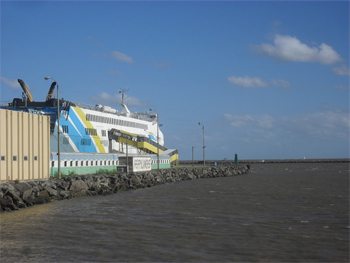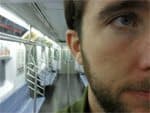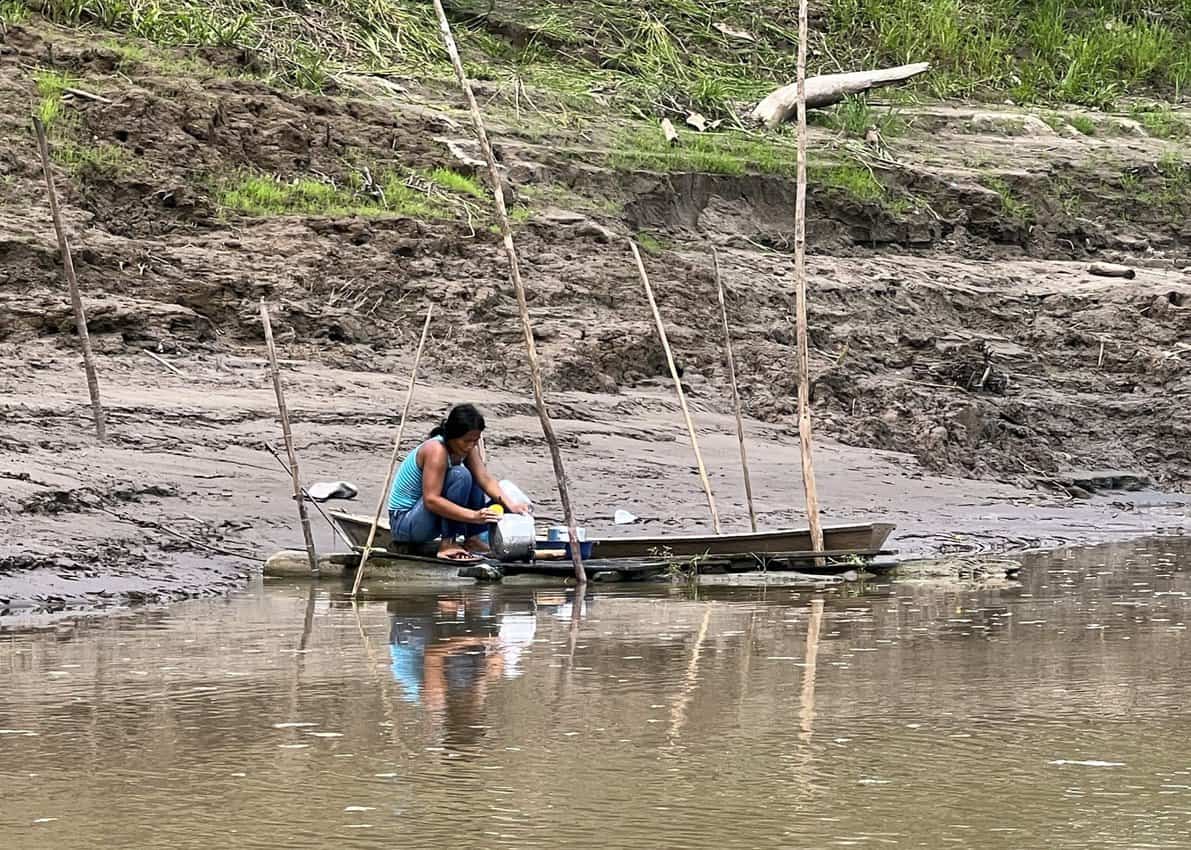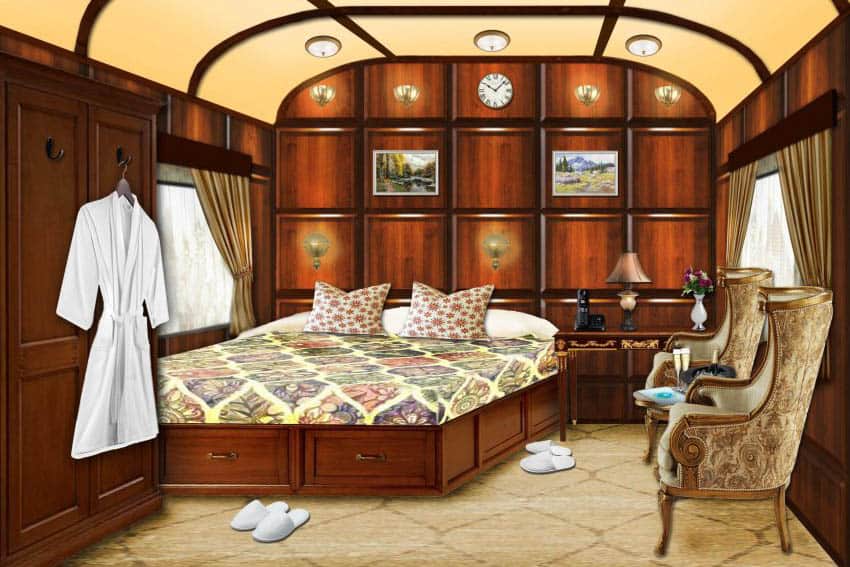
Crossing Argentina by Truck, Boat, Rail and Bus
By John Dennehy
Over three weeks and eighteen hundred kilometers, over mountains, through deserts and across rivers, I crossed Argentina in four phases: bus; hitch-hiking; train; and boat. The way you travel helps inform what you see, so if I wanted to see everything, I thought I should travel not just to new places, but also in new ways.
Bus
I crossed the border from Chile in the lakes region of Patagonia. As soon as the bus rolled over the border in Los Aleces National Park everything changed; the ground was dyed grey from volcanic ashes from a nearby erupting volcano.
From San Carlos de Bariloche I continued onto San Martin de los Andes and
watched out the window, across rising peaks of the Andes and down onto their flooded valleys. The crystal blue lakes twisted and curved around the mountains, giving the illusion that they could be rivers and the peaks islands, 3,000 meters high.
After an overnight bus heading north and east to Neuquén I was out of the mountains—and 600 kilometers west of the Atlantic Ocean. The bus was easy and during the day I glimpsed some spectacular landscapes speeding by the window, but I didn’t learn anything about the places or people I was passing.
Distance: 575 kilometers
Time: 7 days
Cost: 400 pesos ($87.75)
The website plataforma10.com has a pretty good network of bus routes and companies listed for the entire nation and for the Lakes region around the Andes, Via Bariloche has lots of buses and covers just about every route.
Hitchhiking
He looked at me with a wild look in his eyes and said, “Sit down, you’re driving.”
He moved behind me putting a knee on the bed and leaning forward to give me room to pass.
The next morning I walked back out onto Route 22. It was hot and felt like a desert, there was just sand, scrubs and sun as far as the eye could see. The first truck that stopped had the by now familiar purple and orange OCA sticker on the windshield. It was a private mail truck, driving nonstop Buenos Aires to Neuquénand back (2200 kilometers).
One of the first things Hugo, the driver, did was take off his shirt, revealing a mess of grey hairs on his chest.
“I’ve been driving trucks for fifty years,” he proudly told me. “Peron made this a beautiful nation. Do you know who Peron is?” he looked at me, all of a sudden alarmed that someone may not be familiar with such a great man. The big brown eyes of an aging grandfather bulged out from his thick eyebrows and wrinkled face.
“A little bit,” I said. “He was president in the 1950’s right?”
“Oh Peron, Peron. What a man he was,” he said. He grabbed an album from the mess on the bed behind us. “I have a picture of Peron’s funeral in there, the rest are pictures of my family.”
I looked at the first picture, staring at it, not sure if I should return the album or turn the page. Hugo leaned over and pushed his coarse hand against the photo, turning the page for me. I was concerned that Hugo was paying so little attention to the road, but this went on for the entire album. He would flip the page and look over and point, giving me details about each picture.

T“This is the longest straight stretch of road in the world,” Hugo announced after he put the album away.
It was desert on either side stretching out to the horizon. In front of us was the two-lane highway running through the dark yellow sand and dirt before disappearing into in the blur where the hot land met the clear blue sky. I grabbed my camera and snapped a few shots.
“Hey, you know how to drive?” Hugo asked.
“Yeah, I used to drive, I haven’t in years though—and I’ve never driven a big truck like this,” I said casually, wondering how this might relate back to Peron.
“Get your machine ready!” Hugo shouted.
I assumed he meant my digital camera and picked it up off my lap, then, to my utter surprise, Hugo stood up.
He looked at me with a wild look in his eyes and said, “Sit down, you’re driving.” He moved behind me putting a knee on the bed and leaning forward to give me room to pass.

I jumped up, sat down in the driver’s seat and steadied the truck which had begun to pull to the left, across the double yellow line.
“You better give it some gas, or you’ll have to downshift,” Hugo said calmly. I was not yet conscious of the fact that I had jumped into the driver’s seat of a massive mail truck at 100 kilometers per hour; the first seconds were all instinct and reaction.
Once we were heading straight and Hugo’s words echoed in my ears I had my first thought, “I don’t know how to drive manual so I need to keep the speed steady.” And I pushed down on the gas.
Hugo had grabbed my camera from me in my dash to the driver’s seat and was sitting in the passenger seat looking curiously at it.
“How does this work?” he asked. “Which button do I press?”
I was surprised how calm Hugo was. He seemed more interested in the camera than me driving. He held it out for me to show him how it worked, as he had shown me the photos earlier, but I kept my hands firmly on the wheel.
“Just point and press the button on the top right,” I said.
I had a wide smile on my face, leaning forward over the wheel, my hands awkwardly placed at three and nine. I wasn’t happy per se, it was more a holy-shit-am-I-really-driving-a-mail-truck-in-Patagonia sort of smile, but until we switched seats again a few minutes later, still speeding at 100 KPH, my face was frozen in giddy shock.
I never had much trouble getting picked up, so the travel was quick and free, but besides that, I loved the human element to it. Every time I got a ride, I learned about the places I was moving through from the people who lived and worked there. Hugo was somewhat exceptional, and while his was the only truck I drove, all the drivers were excited to have a passenger to talk to about their job, family and country.
Distance: 600 kilometers
Time: 6 days
Cost: 0

Train
Everyone I spoke with in Bahia Blanca strongly advised me to avoid the train, especially if I wouldn’t be traveling in luxury class. I traveled in Tourist class, which is the lowest of three.
The train was obviously very old: the windows didn’t open or close properly if at all, the lights flickered and only one of nine fans in my car was functional.
Dust covered everything. At each end of the car was a bathroom, which was literally just a hole in the metal, the gravel and train tracks flashing by below.
The seats were benches just wide enough for two across with good leg room. I had a numbered ticket that matched a digit written sloppily in marker above my seat. The benches were reversible and for some reason the bench in front of mine was turned around facing me, and I had an unfortunate position.
Squeezed next to me was the widest woman on the train, and across was the dirtiest man. The man had a shaved head but with long dreadlocks in the back, smelled horrible and had a layer of dirt caked on his skin.
Most disturbing was that he must have had crabs or some genital rash. He was constantly rubbing his crotch through a large hole in his pants, which I assume was caused by all the rubbing. When he got up, I turned his seat around. He seemed upset when he returned but just grumbled at me. An hour later, he randomly started shouting “Yankee hijo de puta, Yankee hijo de puta!” before stopping as suddenly as he had begun.
In Buenos Aires I kept the theme going by only traveling by subway and commuter rail. The subway system was all underground and very cheap, but also noticeably old. Many cars were covered from end to end with graffiti. The commuter rail was also badly in need of repairs and people jammed the doors open while the train was moving to give a breeze in the heat.
The trains were a lot like the bus. It was fairly efficient if uncomfortable but it did little more than take me to the next place without teaching me much about what was in between.
Distance: 640 kilometers
Time: 15 hours
Cost:58 pesos ($12.72)
Check the Buenos Aires provincial government website for current schedules and prices.

Boat
I could have taken a bus, train or hitchhiked from Buenos Aires to Uruguay but I had already done all those things— there was a boat. Rio de la Plata divides the Argentinean capital from its Uruguayan counterpart, Montevideo.
It’s said to be the widest river in the world, but at its mouth, where I was crossing, it did not seem much like a river at all, there were tides, waves and no sign of land on the other side.
If I didn’t know any better I’d just call it the ocean. I tend to avoid any luxuries while on the road, and while this was the most expensive of my four types of travel in Argentina, I couldn’t pass up including a boat ride into the mix.
The ferry terminal was very large and felt somewhat like an airport. Before boarding, you had to pass through security then immigration. There were people standing at the wide door onto the ferry, dressed as flight attendants and smiling at everyone who walked on. The rows of seats were even identical to airline seats.
The actual trip was disappointing, it didn’t feel like travel. It didn’t even feel like I was on a boat. There was no way to go outside, to feel the salty air pushing through your hair, feel the mist against your face, or even see the water very well at all. Though the cloudy Plexiglas windows all I could make out was choppy brown water as far as the eye could see. Somewhere along the way we crossed the maritime border and I left Argentina.
Distance: 230 kilometers
Time: 3 hours
Cost: $394.60 (1,800 pesos) The fare is paid in U.S. dollars, always a strong indication that something is expensive. Ferry’s run roughly every two hours every day, check the BuqueBus website for a daily schedule and up to date price
John Dennehy grew up in New York but moved out of the country when Bush was re-elected. For five years he lived in the developing world, mostly in Latin America, and returned to the United States in 2010. He is writing a book titled Illegal about his deportation from Ecuador during a nationalist revolution and works at the press office of the United Nations. Visit his website.
- Greece Getaway: Camping Hacks for Your Next Getaway - April 25, 2024
- Products and Clothing You Might Enjoy - April 25, 2024
- Saudi Arabia Might Be Your Next Getaway Spot - April 23, 2024






